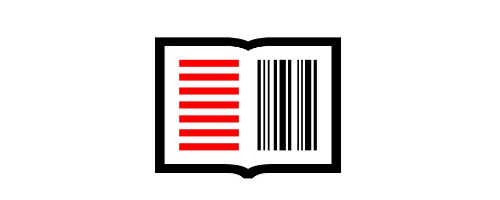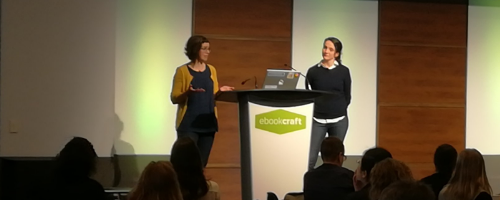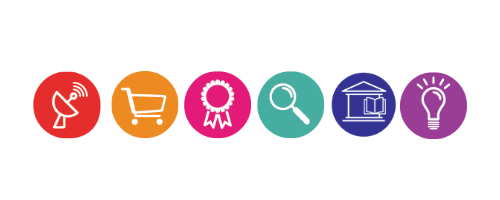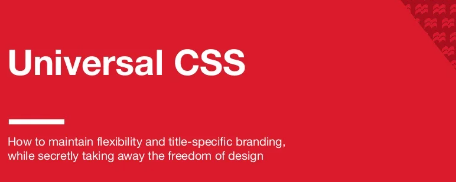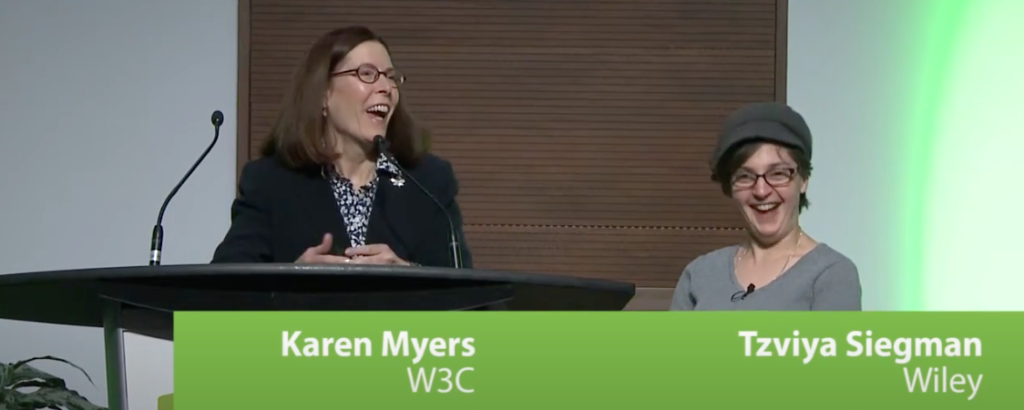This session covers the partnership project between NNELS and independent Canadian publishers aimed at identifying and preventing accessibility barriers.
epub
Learn about using XSLT to produce EPUB2 and EPUB3 books from XML or XHTML input as well as PDF for print with CSS or XSL-FO.
Shannon Culver (eBOUND Canada) and Sabina Iseli-Otto (National Network for Equitable Library Service) share some of the lessons learned at this year’s Accessible Publishing Summit.
Accessibility and Usability Consultant, Ka Li, from the National Network for Equitable Library Service, talks about how accessibility features are used (or can’t be used) by people with print disabilities.
What might the future of ebooks look like? Are Web Publications real? This session is part history lesson, part unhinged rant, part futile attempt to predict the future.
Naomi Kennedy guides you on the SVG image format as it pertains to ebooks: what it is, how and why it’s used, and demo tools to create and edit these image files.
A hands-on workshop where participants take on a few of the perennial challenges unique to digital publishing.
In this workshop, we present the CSS authored at Macmillan as a case study and explore alternative ways to code and style complex content with CSS, with a focus on grid and media queries in EPUBs.
NNELS will show you what they do to make a book accessible and demonstrate how EPUB files behave when they’re not accessible.
The struggle to create standard CSS for a wide range of textbooks that establishes a standard schema, validates for consistent structure, handles complex layouts, and adheres to accessibility guidelines.
Demonstrating with a real-world project and including live demonstrations of InDesign features and their impact on the user, Kevin Callahan and Rachel Comerford will provide a roadmap for simply accessible ebooks.
Tzviya Siegman (Wiley) offers an in-depth overview of the publishing activity at W3C. Karen Myers (W3C) highlights several standards and areas of interest that affect publishing.


